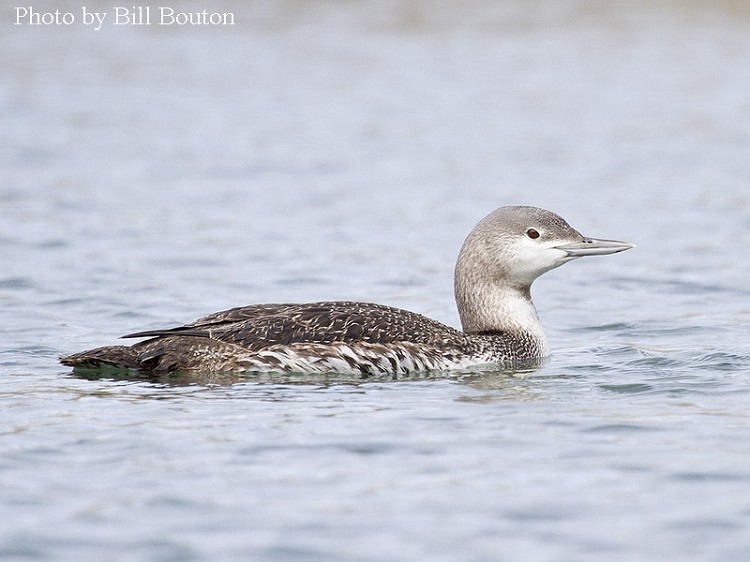Red-throated Loon, Gavia stellate

The smallest and most slender of the loons, the Red-throated Loon, is a fish-eating bird that hunts for prey by diving and pursuing its catch underwater sometimes down to 90 feet. In-flight can be distinguished by its quicker and deeper wings beats and drooping head. This species is a rare winter bird in Tennessee.
Description: Slim head and neck, thin, slightly upturned bill, pale gray and white spotted underparts, white face and white speckling on back in winter when seen in Tennessee. Rufous throat patch during the breeding season, for which it gets the name.
Length: 25 inches
Wingspan: 36 inches
Weight: 3.1 lbs.
Voice: Generally silent but on a breeding grounds, gull-like wailing or cry.
Similar Species:
- Pacific Loon – A mostly a dark face with white behind the eye, distinct line of white and black at the base of the neck, barred back, faint chin strap, thin straight bill.
- Common Loon – A thicker bill, darker face, faint pale color at neck; broken neck pattern.
- Double-crested Cormorants – longer necks, blunt-tipped bills and no white on throat or chest.
Habitat: In Tennessee, Red-throated Loon can occasionally be found in deep, freshwater lakes.
Diet: Feeds primarily on fish.
Nesting and reproduction: There are no known records of this species nesting in Tennessee.
Status in Tennessee: The Red-throated Loon is occasionally found in winter in Tennessee.
Dynamic map of Red-throated Loon eBird observations in Tennessee